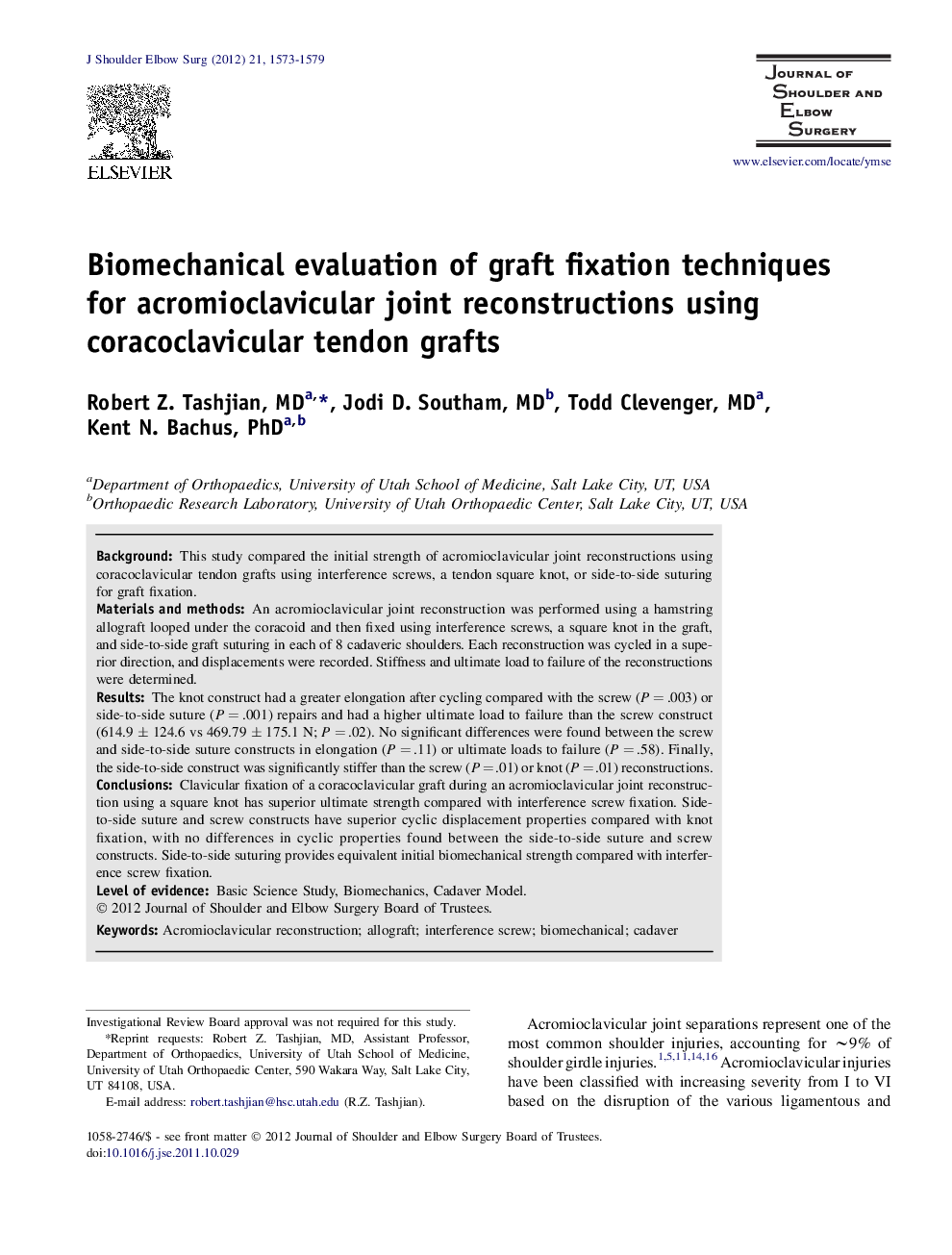| Article ID | Journal | Published Year | Pages | File Type |
|---|---|---|---|---|
| 4073990 | Journal of Shoulder and Elbow Surgery | 2012 | 7 Pages |
BackgroundThis study compared the initial strength of acromioclavicular joint reconstructions using coracoclavicular tendon grafts using interference screws, a tendon square knot, or side-to-side suturing for graft fixation.Materials and methodsAn acromioclavicular joint reconstruction was performed using a hamstring allograft looped under the coracoid and then fixed using interference screws, a square knot in the graft, and side-to-side graft suturing in each of 8 cadaveric shoulders. Each reconstruction was cycled in a superior direction, and displacements were recorded. Stiffness and ultimate load to failure of the reconstructions were determined.ResultsThe knot construct had a greater elongation after cycling compared with the screw (P = .003) or side-to-side suture (P = .001) repairs and had a higher ultimate load to failure than the screw construct (614.9 ± 124.6 vs 469.79 ± 175.1 N; P = .02). No significant differences were found between the screw and side-to-side suture constructs in elongation (P = .11) or ultimate loads to failure (P = .58). Finally, the side-to-side construct was significantly stiffer than the screw (P = .01) or knot (P = .01) reconstructions.ConclusionsClavicular fixation of a coracoclavicular graft during an acromioclavicular joint reconstruction using a square knot has superior ultimate strength compared with interference screw fixation. Side-to-side suture and screw constructs have superior cyclic displacement properties compared with knot fixation, with no differences in cyclic properties found between the side-to-side suture and screw constructs. Side-to-side suturing provides equivalent initial biomechanical strength compared with interference screw fixation.
